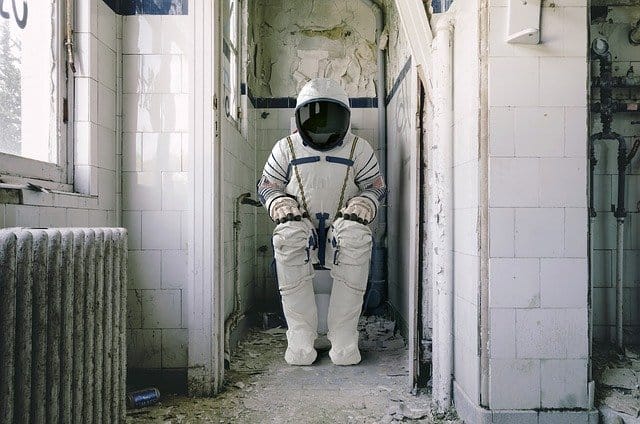Although astronauts do everything, one of the hardest things in space is going to the bathroom. Toilets in space encounter complications that don’t belong to this world. That’s why NASA scientists created a new model that promises to give peace on the most complex space missions.
It’s not hard to imagine, but space baths are really nasty. But it may be easier to describe it under the word of a specialist. “If you want to recreate the smell of a used space toilet you have to gather some used diapers, microwave food wrappers, a used sickness bag and sweaty towels; put everything in a metal trash can and let it bake in the summer sun for 10 days. Then open it up and take a deep breath,” Orion spacecraft engineering leader Jason Hutt tweeted.
Now, in charge of Hutt, precisely, NASA scientists created a new space toilet that promises to avoid displeasure to astronauts on the International Space Station (ISS), located about 400 kilometers from Earth.
Welcome to the @Space_Station, Kalpana Chawla!
Today we received #Cygnus #NG14 spacecraft named after Kalpana Chawla, the first astronaut of Indian origin launched into space but died in the Shuttle Columbia disaster. Like last time, @Astro_SEAL and me captured the spacecraft pic.twitter.com/jMttWfj4TS
— Ivan Vagner (@ivan_mks63) October 5, 2020
The new toilet was shipped on the Kalpana Chawla spacecraft, named for the Indian astronaut who died in the 2003 Columbia Mission space shuttle accident, according to Russian Roscosmos cosmonaut Ivan Vagner.
Now, it will be tested by ISS crew members, in order to see if it can be used for future missions on the Moon, especially for Artemis, where NASA plans to send a woman to the lunar surface for the first time.
How is the new space toilet?
Better known as the Universal Waste Management System, it is the first toilet that NASA has shipped to the ISS since 1990, and is designed to be easier and cleaner to use than regular toilets.
Through a funnel with a system of motorized fans, the toilet sucks solids and liquids deposited on its surface. The faeces, more precisely, will be stored until the spacecraft returns to Earth, while the urine will be vented into space, where it instantly turns into yellow snow.
The real challenge, however, is the smell, as Hutt has reiterated. In the absence of ventilation, engineers will try using deodorants that include powdered charcoal to counteract the intensity of the odor in the enclosure.
The design was funded by the ‘Lunar Loo Challenge‘ program, organized by NASA’s Human Landing System Program, its Tournament Lab, and a startup called HeroX, to raise funds for the Artemis mission.
